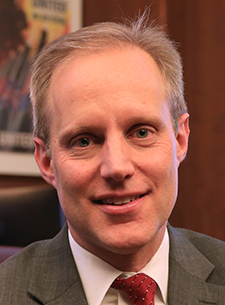WASHINGTON – While midterm elections usually attract far less attention – and voters – than those that occur when the White House is at stake, there are indications this “off year” election will be a little different.
According to Minnesota’s Secretary of State’s office, nearly 303,000 more voters were registered to vote this year than in August of 2018, the year of the last midterm election.
“That was a big jump,” said Minnesota Secretary of State Steve Simon, a DFLer.
And the number of registered voters are expected to grow as we near Election Day on Nov. 8.
With more than 3.6 million registered voters counted in September, more than half of the state’s 5.7 million residents are registered to vote this year. It doesn’t mean that they will all turn out on (or before) Nov. 8. Yet the registration numbers, especially in what’s considered an “off year” election, indicate greater enthusiasm than normal for a midterm, Simon said.
Nick Majerus, spokesman for the Minnesota Republican Party, also said this would not be a typical, sleepy midterm election.
“I think our base is energized because of what’s at stake,” Majerus said.
Simon attributed that to issues that are driving political campaigns this year, which he said are encouraging greater numbers of Republicans and DFLers to register to vote. Those hot-button issues include abortion and law and order.
“I think that over the last two years there has been an awakening across the political spectrum as to the importance of voting,” Simon said. ‘There is just more energy surrounding voting.”
He also said the actions of “election deniers” who have questioned the validity of the 2020 election results because of false claims by Trump have had an impact.
But it’s hard to say whether there’s a greater surge of DFL or Republican voters in the state. A greater surge in either party could affect the results of some close races.
In Minnesota, there is no registration by party. But 31 states and the District of Columbia do register voters by party, or allow voters to register as unaffiliated.
According to the University of Virginia Center for Politics, in 19 states that register by party and in the District of Columbia, there are more Democrats than Republicans. In the other 12, the GOP has the advantage. In the aggregate, 40% of all voters in party registration states are Democrats, 29% are Republicans, and 28% are independents.
Minnesota appears to have more DFL than Republican voters, since the state has preferred Democratic presidential candidates for decades, last voting for a Republican during Richard Nixon’s landslide victory in 1972. Outside of the District of Columbia, that is the longest Democratic streak in the country. But, because there is no party registration, there’s no way of determining the actual strength of the DFL. Also, the Minnesota Senate is under GOP control, so the state is not all “blue.”
Simon said Minnesota’s rejection of party registration “is a cultural thing.”

“In Minnesota, there’s a sense that you are not willing to tell the government what your political affiliation is,” Simon said.
Women voters, young voters could tip the scale
Because the Supreme Court’s overturn of Roe v. Wade is believed to energize female voters, the New York Times analyzed voter registrations using U.S. Census data, names and other information to determine if the decision caused a spike in voter registrations by women.
It found that in Kansas, voter registrations by women spiked by nearly 70% after the overturn of Roe and found smaller increases in other states. Those Kansas voters rejected a referendum that would have amended the state’s constitution to end the right to abortion. And the new female voters in other states were more likely to register as Democrats.
No such analysis was done in Minnesota. Voter registrations spiked after the late June Supreme Court decision, but there’s no way of determining if that increase could be attributed to female registrations, or whether the increase was due to the ramping up of political campaigns and the nearing of November’s elections.
Minnesota has conducted some voter analysis, though. Because those who register to vote must provide their birthdays, the state in 2018 determined that 18 to 25 year olds are least likely to vote, while those who are 65 to 80 years old are the most active voters.
Younger voters lean Democratic, older ones are often more conservative – but not always.
Simon is optimistic the number of younger voters will increase this year. That would be good for some Democrats in competitive races, like former Hormel CEO Jeff Ettinger, who is challenging Rep. Brad Finstad, R-1st. Ettinger hopes college students who have returned to campuses like the one of the University of Minnesota Rochester will give him a boost.
Minnesota has a fantastic voter turnout. In 2020, the turnout was nearly 80% and in 2018’s midterm it was 64.25 %.
Simon credits that high turnout rate to ease in voter registration, which includes online registration and same-day registration. The state also has the longest early and mail in voting period in the nation – 46 days.
Minnesota is also known for a politically active citizenry, with populism being a longstanding force in both the DFL and the GOP.
For Simon and other secretaries of state across the nation, the biggest challenge in the 2022 elections “is pushing back on disinformation,” and “the smearing of the current system with half-truths or untruths” intended to cast doubts on the integrity of elections.
Despite his concerns, Simon said the state’s election system has been battle hardened by the pandemic.
“We survived 2020, so we can survive anything,” he said.


0 Commentaires